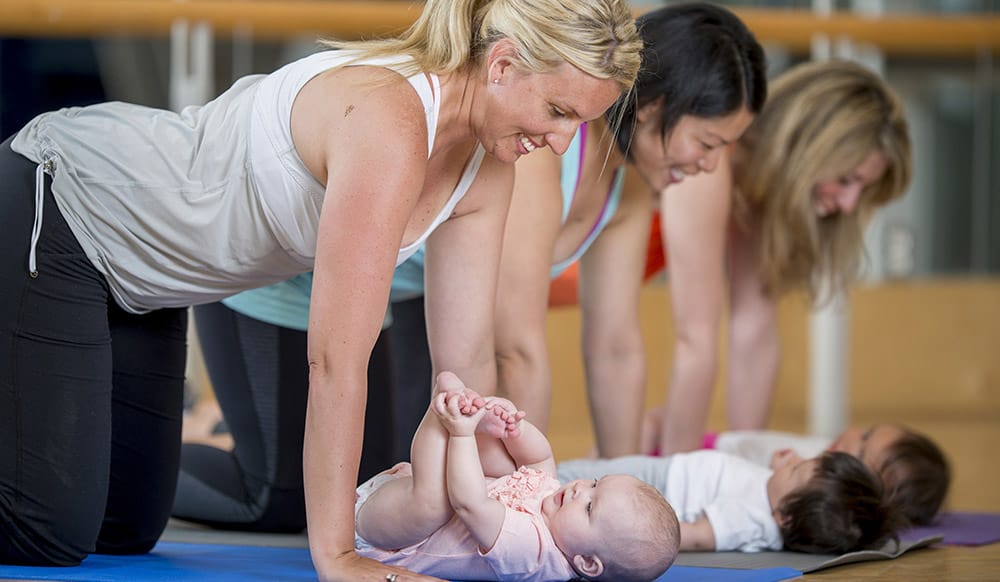“Everybody is different, and every body is different.” – Beverly Diehl

If you are experiencing any of the following when you are pregnant, consult with a Pelvic Physiotherapist:
- Pain in your pelvis, back, groin or legs
- Urinary or fecal incontinence
- Pain with intercourse
- Abdomen tenting when you lift your head off a pillow (diastasis recti)
- Pelvic girdle pain with doing your everyday tasks such as rolling over, walking, or getting in/out of a vehicle
- Vaginal swelling or varicose veins in the legs
- Concerns or questions about preparing for labour and delivery
- Pubic symphysis dysfunction
What does the research say about pelvic floor muscle training during pregnancy?
Women who did Pelvic Floor Muscle Training (PFMT) between 20 and 36 weeks of pregnancy had a lower rate of prolonged second stage labour than women who did no training, less pregnancy-related low back and pelvic pain than those who did no training, less likely to have urinary incontinence at 36 weeks of pregnancy and 3 months post-partum. Click here to learn more.
- The National Institute for Health and Clinical Excellence (UK, 2006) recommends that all women should be taught by a therapist how to perform pelvic floor exercises during their first pregnancy.
- Postnatal Pelvic Floor muscle training significantly reduces urinary incontinence compared to routine postnatal care (Glazener et al 2001, Chiarelli and Cockburn 2002).
- The benefits of starting a pelvic floor muscle exercise for the prevention and treatment of urinary incontinence is documented in this review.
Program of Care in Pregnancy includes the following:
- First visit between weeks 12-21 weeks
- Identify goals
- Education about pelvic floor anatomy and function
- Teach safe movement strategies for pregnancy
- Guide prenatal physical activity, including pelvic floor exercises
- Diastasis recti precautions
- Address/treat any musculoskeletal symotms
- Second visit between weeks 22-35
- Review pelvic floor exercises- review core breathing
- Internal exam if requireed
- Personalized home exercise program
- Manual therapy hands on treatment for abdominal wall ribcage and pelvis- any restrictions in pelvis etc
- Address/treat msk symptoms
- Balance pelvic floor strength and relaxation
- Prepare for birth wks 36-40
- Practice Pelvic floor relaxation and pushing techniques
- Teach/practice positions for Labour and Delivery
- Manual therapy for abdominal wall ribcage and pelvis
- Discuss early post partum health for continuity of care
- Telehealth sessions are available
Did you know?
- During pregnancy 42% of women have urinary incontinence (Kari Bo, Siv Morkveed 2000) and 1 in 10 have fecal incontinence after childbirth (Hay-Smith et al 2008).
- There is level 1 evidence that pelvic floor training with a pelvic physiotherapist who uses internal palpation is recommended to prevent incontinence both during and after delivery.
- Perineal massage can be beneficial to the muscles prior to delivery.
Can I exercise while I am pregnant?
Yes and it is recommended as long as you listen to your body and there are no contraindications.
The Society of Obstetricians and Gynaecologists of Canada (SOGC) has resources with great information. The SOGC teamed up with Canadian Physiotherapy Association in a joint policy statement for pelvic physiotherapy in pregnancy and post-partum to help prevent incontinence and low back pain.
What are the contraindications for exercising while pregnant?
According to the SOGC Clinical Practice Guidelines, 2018 they are:
- Weakened cervix
- Growth-restricted fetus
- Placenta previa after 28 weeks gestation
- Uncontrolled type 1 diabetes, hypertension or thyroid disease
- Preeclampsia
- Multiple pregnancy of triplets or more
- Unexplained vaginal bleeding
- High blood pressure
- Severe anemia
- Ruptured membranes or premature labour
- Other serious diseases such as heart or lung disease
“Take time to do what makes your soul happy.” – Unknown
What do I need to think about while I am pregnant and exercising?
- Drink lots of water during and after exercise
- Wear a supportive bra and comfortable shoes
- Wear layers of clothing
- Incorporate proper kegels as needed with your exercises
- Listen to your body- use the talk test to determine how hard you should exercise
What are the benefits of exercising while pregnant?
- Helps your body get strong for labour and delivery
- Helps with mood and increasing energy level
- Improves bowel function and decreases constipation
- Improves sleep
- Helps with weight management
Why should I see a pelvic physiotherapist while I am pregnant?
- Provide education on what is common during pregnancy
- Discuss activities of daily living and safe exercises
- Review transfers in functional way
- Improve pelvic floor muscle strength
- Discuss posture and positioning
- Help prepare you for labour and delivery
- Provide treatment for pubic symphysis pain, sacroiliac joint pain or low back pain
Visit our Post-Partum page to learn more about pelvic physiotherapy after pregnancy.
Download the Pelvic Health Pregnancy and Beyond brochure for more information.
Do something every day that is loving toward your body and gives you the opportunity to enjoy the sensations of your body.
– Golda Poretsky








